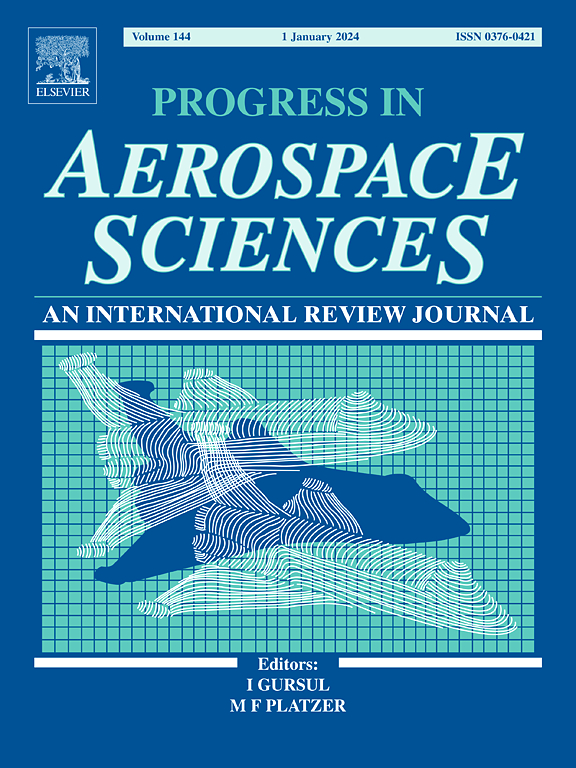Initial results from the first field expedition of UAPx to study unidentified anomalous phenomena
IF 16.2
1区 工程技术
Q1 ENGINEERING, AEROSPACE
引用次数: 0
Abstract
In July 2021, faculty from the UAlbany Department of Physics participated in a week-long field expedition with the organization UAPx to collect data on UAPs in Avalon, California, located on Catalina Island, and nearby. This paper reviews both the hardware and software techniques which this collaboration employed, and contains a frank discussion of the successes and failures, with a section about how to apply lessons learned to future expeditions. Both observable-light and infrared cameras were deployed, as well as sensors for other (non-EM) emissions. A pixel-subtraction method was augmented with other similarly simple methods to provide initial identification of objects in the sky and/or the sea crossing the cameras’ fields of view. The first results will be presented based upon approximately one hour in total of triggered visible/night-vision-mode video and over 600 h of untriggered (far) IR video recorded, as well as 55 h of (background) radiation measurements. Following multiple explanatory resolutions of several ambiguities that were potentially anomalous at first, we focus on the primary remaining ambiguity captured at approximately 4am Pacific Time on Friday, July 16: a dark spot in the visible/near-IR camera possibly coincident with ionizing radiation that has so far resisted prosaic explanation. We conclude with quantitative suggestions (3–5 rules) for serious researchers in the still-maligned field of hard-science-based UAP studies, with an ultimate goal of identifying UAPs without confirmation bias toward mundane/speculative conclusions.
UAPx首次野外考察的初步结果,以研究未确定的异常现象
2021年7月,来自UAlbany物理系的教师与UAPx组织一起参加了为期一周的实地考察,以收集位于卡塔利娜岛及附近的加利福尼亚州阿瓦隆的uap数据。这篇论文回顾了这次合作所使用的硬件和软件技术,并包含了对成功和失败的坦率讨论,并有一节关于如何将经验教训应用于未来的探险。部署了可观测光和红外摄像机,以及用于其他(非电磁)发射的传感器。将像素减法与其他类似的简单方法相结合,对穿过相机视场的天空和/或海洋中的物体进行初步识别。第一批结果将基于大约一小时的触发可见光/夜视模式视频和超过600小时的未触发(远)红外视频记录,以及55小时的(背景)辐射测量。在对最初可能出现异常的几个模糊点进行多重解释后,我们将重点放在太平洋时间7月16日星期五凌晨4点左右捕获的主要剩余模糊点上:可见光/近红外相机上的一个黑点,可能与电离辐射一致,迄今为止还没有得到平淡的解释。最后,我们提出了一些定量建议(3-5σ规则),以供仍然受到诟病的以硬科学为基础的UAP研究领域的严肃研究人员使用,最终目标是在没有对世俗/推测结论的确认偏见的情况下识别UAP。
本文章由计算机程序翻译,如有差异,请以英文原文为准。
求助全文
约1分钟内获得全文
求助全文
来源期刊

Progress in Aerospace Sciences
工程技术-工程:宇航
CiteScore
20.20
自引率
3.10%
发文量
41
审稿时长
5 months
期刊介绍:
"Progress in Aerospace Sciences" is a prestigious international review journal focusing on research in aerospace sciences and its applications in research organizations, industry, and universities. The journal aims to appeal to a wide range of readers and provide valuable information.
The primary content of the journal consists of specially commissioned review articles. These articles serve to collate the latest advancements in the expansive field of aerospace sciences. Unlike other journals, there are no restrictions on the length of papers. Authors are encouraged to furnish specialist readers with a clear and concise summary of recent work, while also providing enough detail for general aerospace readers to stay updated on developments in fields beyond their own expertise.
 求助内容:
求助内容: 应助结果提醒方式:
应助结果提醒方式:


